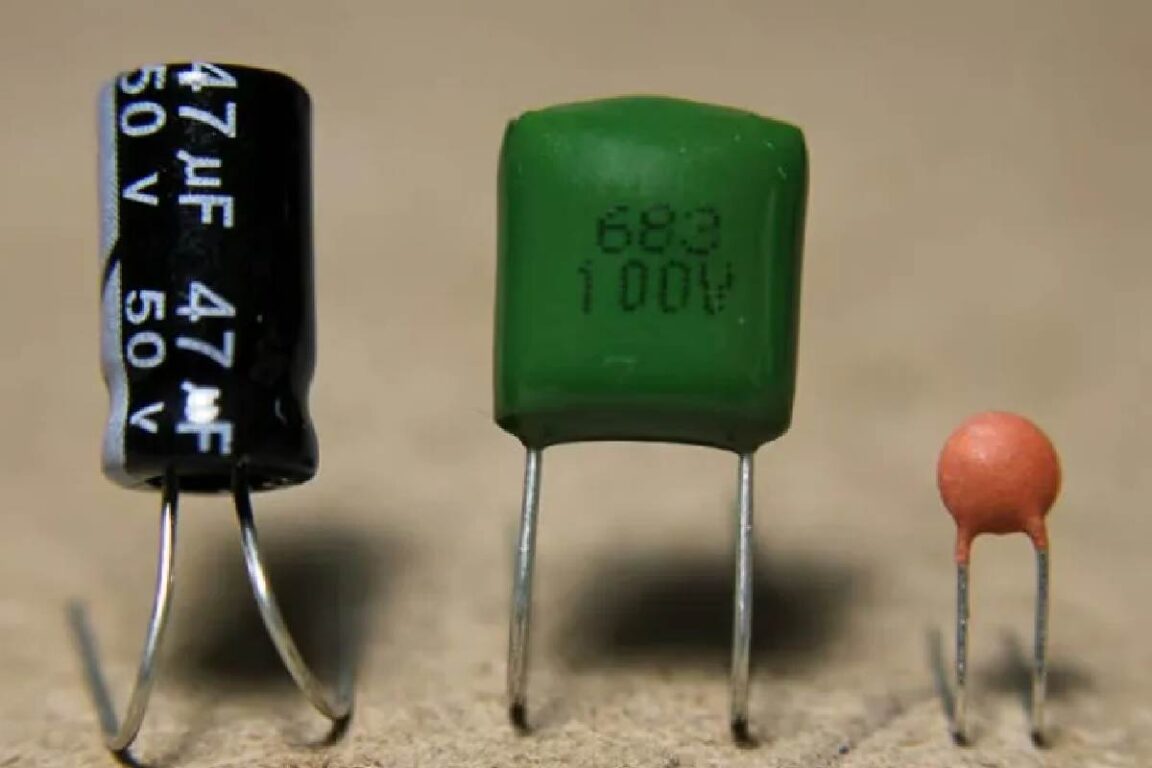Introduction
Capacitor – An electrolytic capacitor is an electronic device, usually cylindrical, capable of accumulating energy inside when connected to a voltage source. The capacitor comprises two metal plates separated by a dielectric element.
Capacitance is a well-known word in electrical engineering and is about storing energy. However, it is expressed in farads, and the capacitor is the instrument used for works related to electricity and electronics, which aim to store energy to be released later.
All these devices have the same structure: two conductive plates separated by a dielectric located between them. However, the energy charge is stored in the dielectric when an electric current flows, and that is why it has to be made of a non-conductive material, such as plastic or ceramic.
So a capacitor is a device that stores electrical charge. However, a condenser capacitor consists of an insulator ( A material that does not allow heat or air to pass through it) placed between two conductors (conduct electricity). Now the concept on which a capacitor works is called capacitance.
Capacitance Depends On
- Dielectric constant( Insulators)
- Area of the plates ( conductor plates)
- Distance between the plates.
What Are The Types Of Capacitors?
These power peaks are penalized by the electricity distributors with higher rates. The way to avoid them is to use capacitor banks, which have this accumulated electric charge and release. However, it at that moment of greater energy demand that the starting of electric motors brings with it. Thus, instead of taking the energy from the electrical network, it comes from the capacitors. Mobile phone also has capacitors because of electronic device
Long with electrolytic capacitors, we have other types of capacitors made of different materials and different qualities:
Ceramic Capacitors
They are very interesting condensers or capacitors because they have very few losses and parasitic inductances thanks to the properties of ceramics.
Plastic Foil Capacitors
They are made up of plastic sheets and metal sheets. However, these capacitors are more significant than those composed only of metalized foils. They have better insulation and higher capacity.
Mica Capacitors
They are capacitors formed by sheets of mica and aluminum that alternate. Plastic elements protect them.
Polyester Capacitors
The dielectric element is made of polyester. They were created to replace paper capacitors to reduce their physical size. The advantages that these capacitors have is that they have low power loss and high performance.
What Is Capacitor Derating Mean?
Derating a capacitor means using it within specified guidelines for smooth power flow, and there are specific guidelines for derating a capacitor. But, the most important among them are,
Applied Voltage means the adequate voltage that can be applied to the capacitor. However, the rule of thumb directs you to derate ceramic capacitors by 50%.
For a voltage supply of 3 volts, the capacitor’s voltage rating must be double, i.e., 6 V, so that the capacitor works and ensures smooth power flow.
Temperature– The temperature range also plays a vital part in the smooth power flow in a capacitor. However, these derating guidelines are specified to 105°C.
What Are the Benefits Of Capacitors?
The typical application of the electrolytic capacitor is to increase electrical power at specific moments that need an intense discharge, as occurs with camera flashes. However, the flash is charged from the battery, and when it fires, it releases all its energy at once, getting that very bright flash. This light effect cannot be achieved on battery power alone.
For its part, among the main benefits of a capacitor, we find the following:
- Significant energy and economic savings are obtained.
- Reduces the size of the current flowing through electrical equipment.
- Less wear and tear on electrical equipment (and, so, a longer useful life).
- Improves the power of an electrical installation.
- Improve the voltage.
Conclusion
In electronics, the electrolytic capacitor has many uses. First, it modulates the signal in power supplies and an oscillator or frequency generator.


